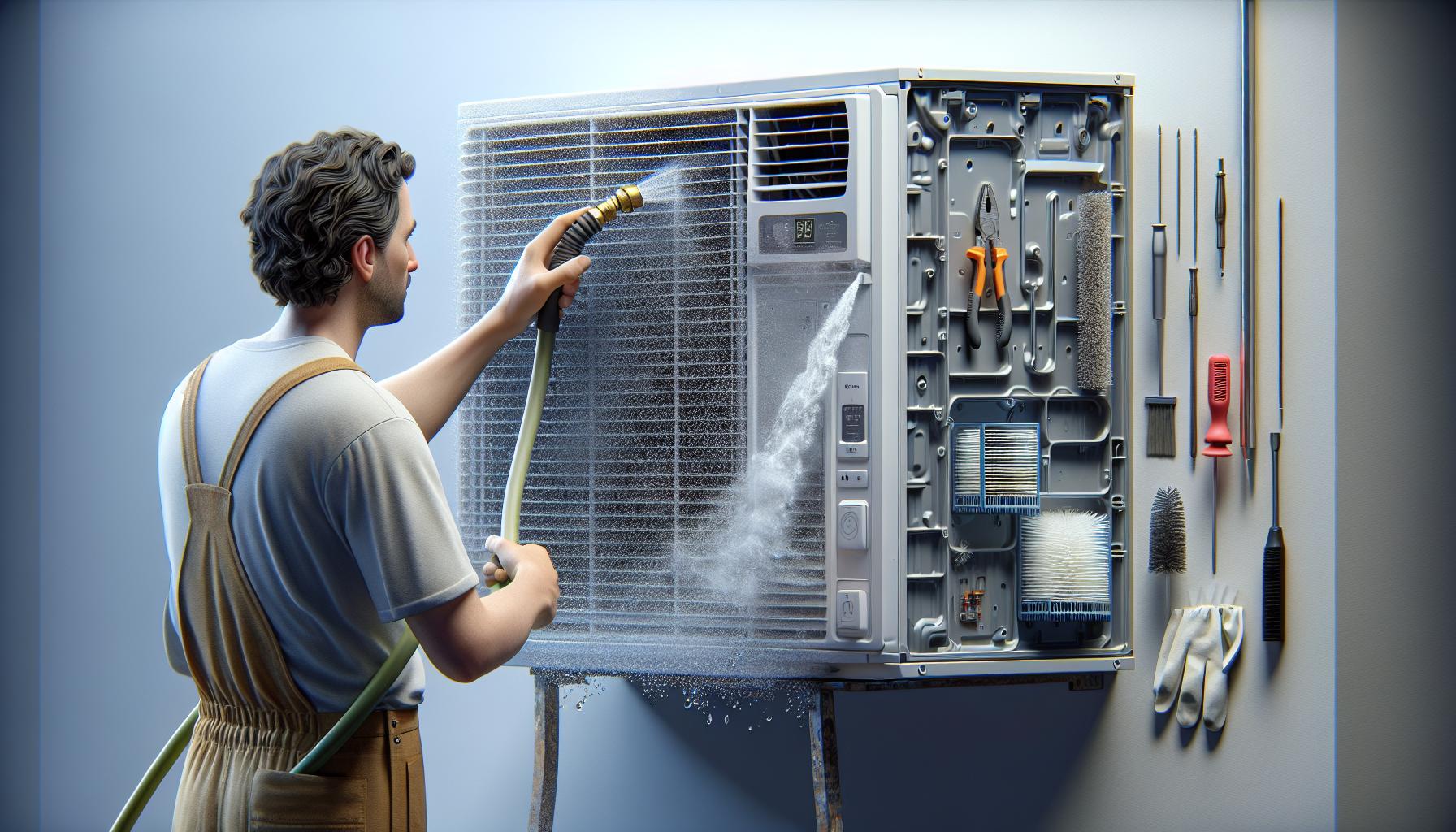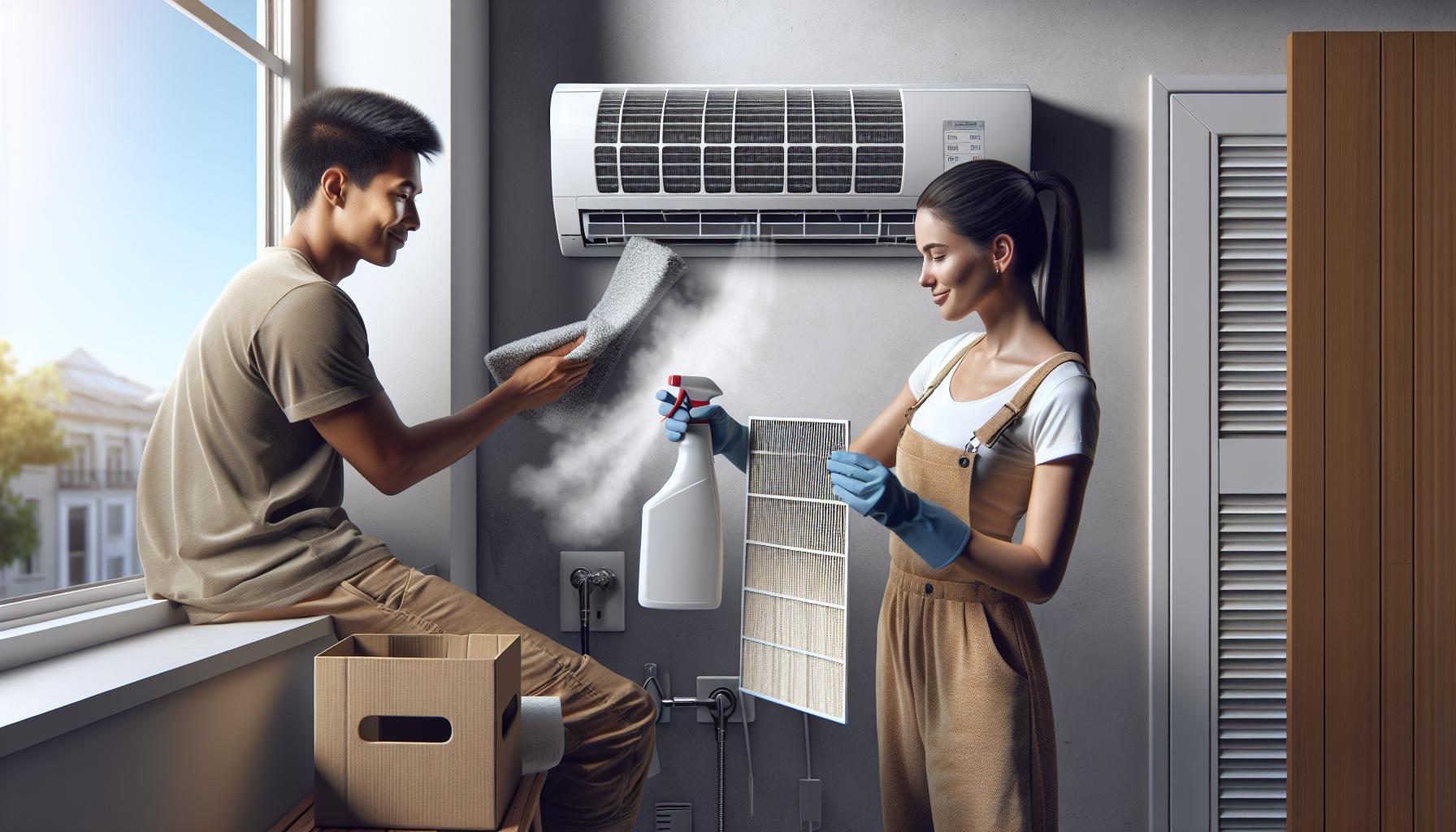Experiencing a Pentair MasterTemp 400 ignition lockout can be frustrating. Your pool heater’s refusal to start is often a sign of this all-too-common issue. But don’t worry, you’re about to learn how to troubleshoot and resolve it.
Understanding the causes of an ignition lockout is crucial for a quick fix. We’ll guide you through the potential reasons your heater is acting up and provide step-by-step solutions to get your pool back to its cozy, comfortable self.
Causes of Pentair MasterTemp 400 Ignition Lockout
When your Pentair MasterTemp 400 displays an ignition lockout error, it’s often due to one of several identifiable issues. Understanding these causes is key to getting your pool heater back up and running.
Dirty Flame Sensor or Pilot
A common culprit is a dirty flame sensor or pilot, which can’t detect the flame properly. This safety mechanism prevents the heater from firing up to avoid potential gas build-up. Regular cleaning and maintenance of these components will ensure they function correctly.
Faulty Ignition Control Module
Another possibility is a faulty ignition control module. This component controls the electrical current to the ignitor. When it fails, the ignition process is interrupted, leading to a lockout.
Gas Supply Issues
Inadequate gas supply to your heater can also result in an ignition lockout. This might be due to:
- Partially closed valves
- Leaks in the supply line
- Obstructions in the gas pipes
Ensure that your gas supply is consistent and free from any impediments.
Electrical Connections
Loose or corroded electrical connections can disrupt the flow of current needed for ignition. Conduct a thorough check and tighten or replace wiring as necessary.
High Limit Switch Activation
The high limit switch monitors the water temperature. If water within the heater exceeds safe levels, the switch triggers, causing an ignition lockout. Investigating and resolving the underlying reason for overheating is crucial.
By pinpointing and rectifying these common issues, you’re one step closer to remedying the ignition lockout on your Pentair MasterTemp 400. Regular servicing and proactive checks can reduce the likelihood of such problems down the line.
Reason 1: Flame Sensor Issue
When your Pentair MasterTemp 400 pool heater is experiencing an ignition lockout, a common culprit might be the flame sensor. This small but crucial component detects whether a flame is present once the gas valve is open. If it’s not functioning properly, the sensor fails to confirm the presence of a flame, leading to a lockout for safety reasons. Over time, the sensor can become covered in soot or debris, impairing its sensitivity.
To get a handle on this issue:
- Inspect the flame sensor for any signs of dirt or corrosion.
- Clean the sensor carefully with a soft cloth; harsh chemicals or abrasives can damage it.
- Ensure the sensor is properly positioned and secure, as even a slight misalignment can cause it to malfunction.
Should the flame sensor appear clean and correctly installed, yet the problem persists, it’s possible that the component may have failed and requires replacement. This task calls for a delicate touch and understanding of your heater’s components.
Real-life scenarios show the importance of a flame sensor in operation. For instance, a pool owner in Surrey found that cleaning the flame sensor resolved their Pentair heater woes after several unsuccessful resets. Maintenance professionals often list flame sensor issues among the top reasons for service calls on residential pool heaters. Regular checks of this component can prevent unexpected interruptions in your pool’s heating system.
Reason 2: Gas Supply Problems
When your Pentair MasterTemp 400 faces an ignition lockout, gas supply issues could be a key culprit. The unit requires a steady and consistent gas flow to ignite properly. If there’s a disruption or blockage in the gas supply, the heater will not start.
Check the Gas Pressure
First things first, verify the gas pressure to your pool heater. It’s essential that it meets the specifications outlined for your model. Manufacturers typically provide these details in the user manual; they’re not optional but rather a strict guideline.
Inspect for Blockages
Over time, the gas supply line may develop blockages due to debris or insects. It’s not uncommon for spider webs or nests to affect the flow of gas in outdoor appliances.
- Ensure the main gas valve is fully open.
- Visually inspect the supply line for any obstructions.
- If necessary, have a qualified technician clean the line.
Look for Leaks
Leaks in the gas line are not only dangerous but can also lead to ignition problems. Conduct a thorough inspection or hire a professional to use a gas leak detector around all fittings and along the gas line.
Regulator Performance
The gas regulator should maintain a consistent pressure adequate for your heater. If the regulator is failing, it may not provide enough gas when needed or could supply it at too high a pressure.
Remember, resolving gas supply issues isn’t just about reigniting your heater—it’s about ensuring safety and maintaining the longevity of your system. Regular maintenance and prompt attention to these issues will help keep your pool heater in top condition.
Reason 3: Electrical Problems
When tackling a Pentair MasterTemp 400 ignition lockout, electrical issues should never be overlooked. Erratic or inadequate electricity can prevent successful ignition, resulting in persistent lockout status. Here’s what to look out for:
- Voltage Fluctuations: Your heater requires a stable power supply. If the voltage is inconsistent, it may trigger an ignition lockout. Use a multimeter to check the voltage at the heater’s connection points to ensure it’s within the specified range.
- Faulty Wiring: Over time, wiring can become frayed or corroded, disrupting the electric current. Inspect the wires leading to and from the ignition system for any signs of wear or damage.
- Defective Ignition Components: The igniter and flame sensor are key players in the ignition process. A fault in these components can result in an ignition failure. Test both parts using manufacturer-recommended procedures to confirm their functionality.
- Failed Control Board: The control board functions as the brain of your pool heater, coordinating the ignition process. If it is malfunctioning, none of the commands to initiate ignition will succeed. Look for error codes or indicator lights that signal board issues.
Routine maintenance including professional electrical checks and timely replacement of worn-out parts is imperative. This proactive approach will significantly reduce the likelihood of electrical issues causing an ignition lockout in your Pentair MasterTemp 400 pool heater. Remember, when dealing with electrical components, your safety is paramount. Consult with a certified technician if you’re unfamiliar with handling electrical repairs.
Troubleshooting Steps for Ignition Lockout
When facing an ignition lockout with your Pentair MasterTemp 400, following a systematic approach to troubleshooting can help identify and solve the problem efficiently.
Check the Gas Supply
Ensure the gas supply valve is fully open. A partial valve opening might not provide sufficient gas flow for ignition. Observe the pressure reading on the gas pressure gauge; the manual lists the optimal range.
Inspect the Airflow
Adequate airflow is crucial for safe operation. Inspect the following components for blockages:
- Air intake vents
- Exhaust outlets
- Internal air pathways
Clear any debris that restricts airflow which—when compromised—triggers a safety lockout.
Evaluate the Flame Sensor
The flame sensor monitors whether the burner has ignited. If it’s faulty or dirty, it may not detect the flame, inadvertently signaling the control board to initiate a lockout. Clean the flame sensor gently with a soft cloth, and check for any damage.
Scan for Error Codes
Your heater’s display may show error codes that can quickly pinpoint the issue. Refer to the owner’s manual for a list of error codes and their meanings.
Test the Ignition Hardware
Working with electrical components requires care:
- Turn off power to the heater.
- Inspect the igniter, wiring, and connections.
- Look for signs of wear or damage.
- Use a multimeter to test the igniter’s continuity.
- Ensure the igniter is correctly positioned; even slight misalignments can prevent proper operation.
Remember, working with gas and electrical systems poses serious risks. If you’re not comfortable handling these components or if the troubleshooting steps above do not resolve the issue, it’s crucial to seek the help of a certified professional. Regular maintenance schedules and timely repairs play a significant role in preventing ignition lockout scenarios.
Step 1: Check the Flame Sensor
When your Pentair MasterTemp 400 faces an ignition lockout, the flame sensor often needs your attention. This component confirms whether a flame is present after the heater attempts to ignite. If the sensor fails to detect a flame consistently, it will signal the system to enter a lockout state to prevent unburned gas from accumulating.
Start by locating the flame sensor. It’s typically positioned near the burner assembly. Before handling, ensure that the power to the heater is switched off to avoid any risk of electrical shock. Once you’ve located the sensor, inspect it for signs of:
- Soot buildup
- Corrosion
- Physical damage
Accumulated soot or corrosion can impede the sensor’s ability to function correctly. Clean the sensor carefully with a soft cloth; in some cases, fine-grit sandpaper may be necessary to remove hardened deposits. However, it’s vital not to damage the probe during cleaning as it may exacerbate the issue.
After cleaning, reattach the sensor and restart your heater. If the flame sensor was the culprit behind the lockout, the heater should now ignite. However, if the lockout persists, further investigation may point towards the need for sensor replacement or examining other hardware components more closely.
Remember that regular checks and cleaning of the flame sensor can greatly reduce the chances of future lockouts. Stay one step ahead by including this in your routine maintenance schedule.
Step 2: Inspect the Gas Supply
After addressing the flame sensor, your next move involves a thorough inspection of the gas supply. This step is critical, as insufficient gas flow is a common cause for an ignition lockout in the Pentair MasterTemp 400 pool heater. Ensure the gas supply valve is fully open; a partially closed valve will not provide adequate gas flow to maintain ignition.
Locate the gas supply valve, typically found near the base of the heater, and perform these checks:
- Verify the gas valve position
- Listen for any unusual sounds such as hissing, which could indicate a gas leak
- Inspect the gas lines for signs of wear, damage, or obstructions
Remember, safety first. If you suspect a gas leak, don’t attempt to repair it yourself. Evacuate the area and contact a professional immediately.
For those comfortable proceeding, check the gas pressure. Pentair specifies an optimal range for gas pressure, and it’s crucial to maintain these levels to ensure efficient heater operation.
Normal Operating Gas Pressure Ranges for Pentair MasterTemp 400
| Fuel Type | Minimum Pressure | Maximum Pressure |
|---|---|---|
| Natural Gas | 4″ wc | 14″ wc |
| Propane | 8″ wc | 14″ wc |
If you find that the gas pressure is outside of these ranges, adjusting it requires specialized knowledge. Without proper training, adjusting gas pressure can be hazardous. At this point, engaging the services of a qualified technician is advisable.
Maintaining clear, unobstructed gas lines and correct pressure is not just about resolving current issues. It’s also about averting future lockouts and ensuring the longevity and efficiency of your Pentair MasterTemp 400 heater. Regular checks of your gas supply can detect problems early and keep your pool heater running smoothly.
Step 3: Check for Electrical Issues
When troubleshooting a Pentair MasterTemp 400 ignition lockout, it’s crucial to inspect the electrical components as these can be a source of the problem.
Firstly, make sure the power supply to the heater is active. A simple check at the breaker box can save you hours of frustration. Ensure the breaker hasn’t tripped and that the switch is in the ‘on’ position. If the breaker trips repeatedly, this is an indicator of an underlying electrical problem that requires attention.
Next, examine the wiring leading to the ignition system. Look for:
- Signs of wear
- Frayed wires
- Loose connections
Damaged or loose wiring can interfere with the electrical signals necessary to initiate the ignition process.
It’s also important to check the fuse or circuit board for signs of corrosion or failure. If you find a blown fuse, replace it with one of the same rating to prevent further electrical issues.
As you proceed, verify that the safety interlocks are fully engaged. These safety mechanisms are designed to prevent ignition if the heater is not properly assembled or in safe operating condition. The MasterTemp manual provides guidance on locating and testing these interlocks.
Lastly, perform a continuity test on the ignition hardware. A digital multimeter will help you determine if there’s a break in the electrical pathway.
Remember, working with electrical systems can be dangerous. If you’re not comfortable with these steps, contact a professional technician. Keep in mind; electrical malfunctions can go unnoticed until a critical failure occurs. Regular maintenance checks of your Pentair MasterTemp 400’s electrical system are a proactive approach to prevent ignition lockout.
Solution for Pentair MasterTemp 400 Ignition Lockout
When you’re faced with an ignition lockout in your Pentair MasterTemp 400 pool heater, taking systematic steps can quickly restore the functionality of your unit. Having already checked the gas supply, airflow components, and flame sensor, the next step is to address any potential electrical issues.
Start by Inspecting the Power Supply. Ensure that the pool heater is receiving consistent and correct voltage. Any fluctuations or interruptions in the power supply can precipitate an ignition lockout. Use a multimeter to verify that the voltage meets the heater’s specifications.
Next, examine the Wiring and Connections. Look for any signs of wear, corrosion, or damage that could impede electrical flow. Loose connections often go unnoticed and can cause intermittent failures, so ensure all connections are secure and intact.
The fuse and circuit board of the heater are vital components that should be checked next. A blown fuse or a malfunctioning circuit board will prevent ignition. You’ll want to:
- Locate the heater’s fuse and assess its condition.
- Inspect the circuit board for any signs of damage such as burnt areas or corrosion.
Lastly, Verify the Safety Interlocks. These interlocks are designed to prevent the heater from operating under unsafe conditions. Check that all safety mechanisms are fully engaged and that nothing is bypassing these critical systems.
Conducting a Continuity Test on the ignition hardware may reveal issues not apparent to a visual inspection. If the test indicates a break in the circuit, replacement of the affected parts will be required.
Remember, working with electrical systems necessitates caution. Always ensure the power is off before performing any checks or repairs. Moreover, regular maintenance checks stand as your first line of defense against ignition lockouts, safeguarding against unexpected failures and guaranteeing continued operation of your pool heater.
Conclusion
You’ve now got the knowledge to tackle a Pentair MasterTemp 400 ignition lockout head-on. Remember to handle electrical components with care and consider regular maintenance to avert future issues. Should you encounter persistent problems despite your troubleshooting efforts, don’t hesitate to call in a professional. With your heater’s proper functioning, you can return to enjoying a warm, inviting pool whenever you please. Keep this guide handy, and you’ll be well-equipped to maintain your pool’s comfort with confidence.
Related Posts:
- Pentair MasterTemp 400: Fixing the Service Heater…
- Pentair MasterTemp 400: Fix a Flashing Heating Light…
- Pentair Heater Error Codes: Troubleshooting & Fixes Guide
- Pentair MasterTemp 400 Fixes: Solve Not Heating Issue
- Solving Sta-Rite Heater Ignition Lockout: Prevention & Tips
- Sta-Rite Pool Heater Troubleshooting: Quick Fixes…




